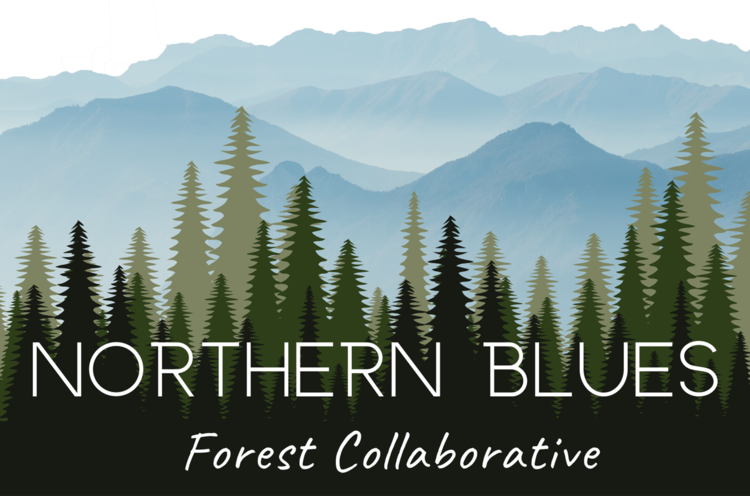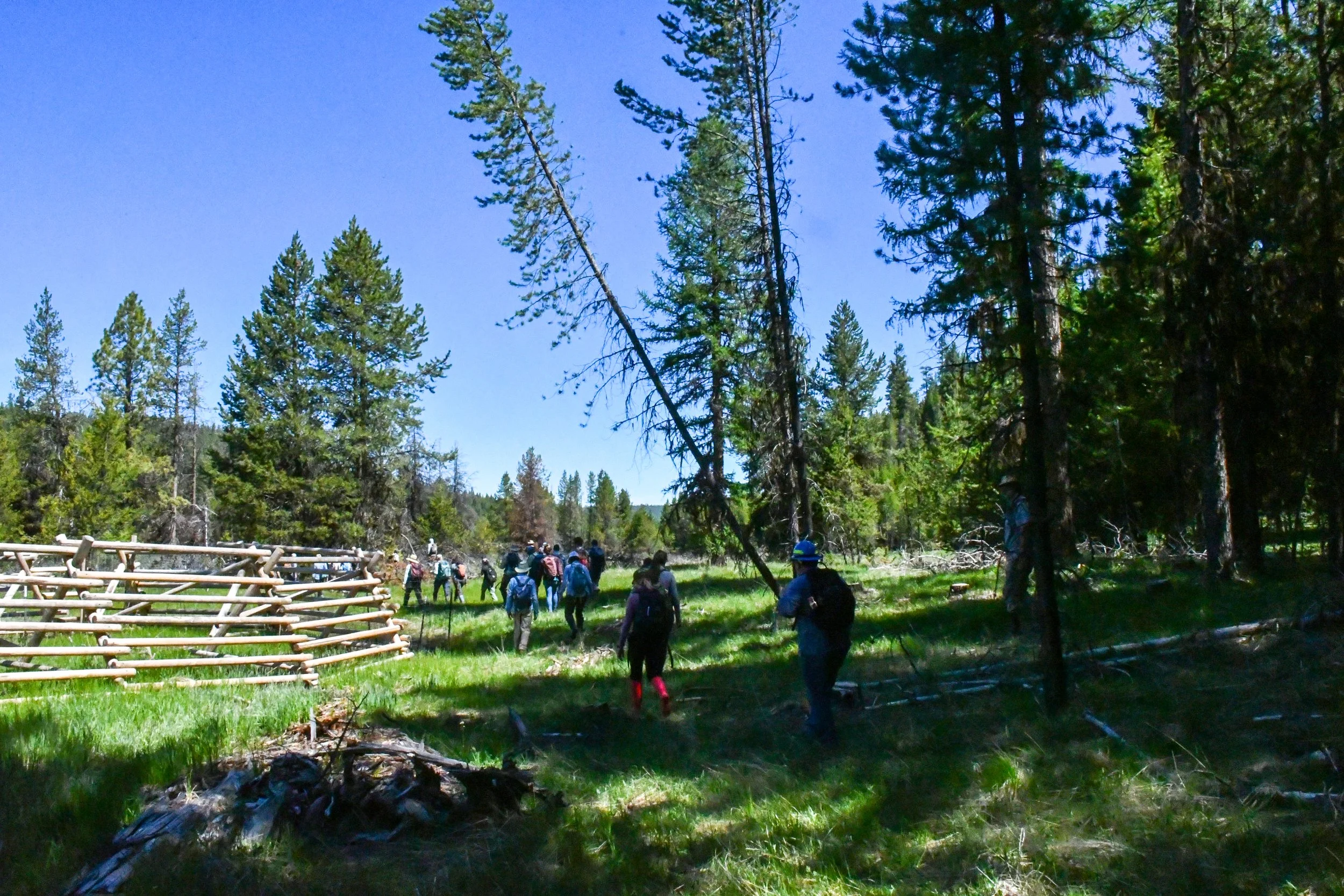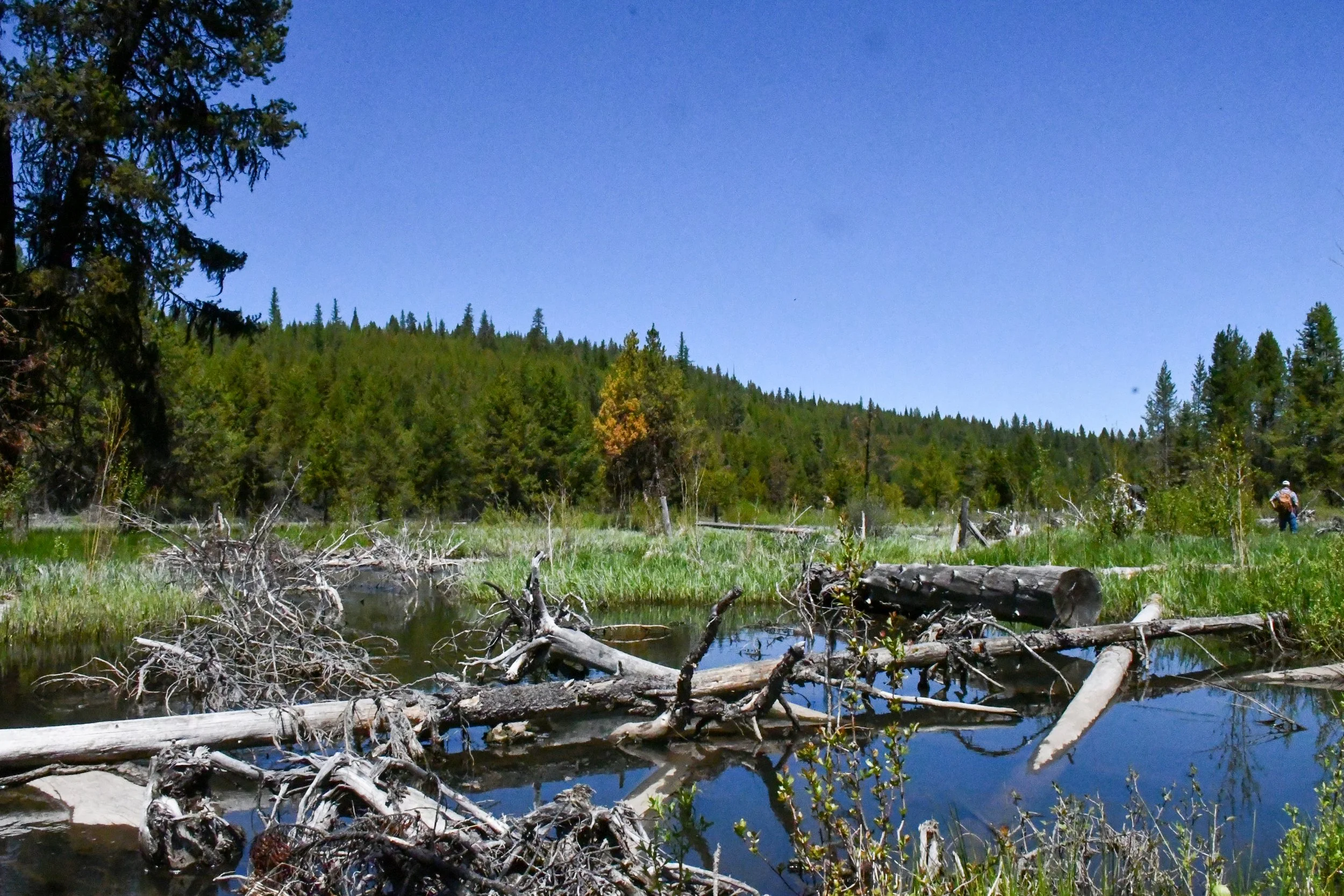Features Overview
Recap: Sheep Creek Stewardship Project field tour
Sometimes, a walk in the woods requires tall boots, or even waders - and sometimes forest restoration goes beyond the trees. The Sheep Creek Stewardship Project in the upper Grande Ronde River watershed is multifaceted - combining improved fish and wildlife habitat, floodplain reconnection and a landscape more resilient to wildfire on land managed by the Wallowa-Whitman National Forest and the Bureau of Land Management.
Former La Grande District Ranger Bill Gamble said, “We asked ourselves if we wanted to be more aggressive at reducing fuels than just hand piling. We decided we wanted riparian health included in the purpose and need in areas of the project where it made sense.”
Grande Ronde Basin rivers restored through public/private/tribal partnerships
The rivers and streams of the northern Blue Mountains are home to thousands of species. Restoring these vital waterways to their natural channels and floodplains improves habitat for fish and wildlife as well as their human neighbors.
By recreating natural features and processes, river restoration projects encourage rivers once constrained by development to reconnect with historic courses that can be seen in aerial photos from the early and mid-twentieth century. Some projects show benefits quickly with more fish utilizing restored pools, added woody debris and spawning gravels, while other benefits will take time.
Prescribed fire season brings restoration to the Northern Blues
It’s springtime and smoke is in the air as landowners and managers take advantage of seasonal weather conditions to reduce fuels and improve forest and range health with prescribed fire.
While most private landowners primarily burn ditches, fields and piles of brush, there is an increasing desire to burn sizable chunks of ground. To support this movement, a partnership between Oregon Department of Forestry and OSU Extension developed a program called IGNITE Prescribed Burn Skills Training to provide hands-on training to diverse participants, including Certified Burn Manager trainees, anyone else who wants to learn about fire ecology and science, prescribed fire unit layout, firing and holding techniques, monitoring weather, and operating pumps and fire engines.



